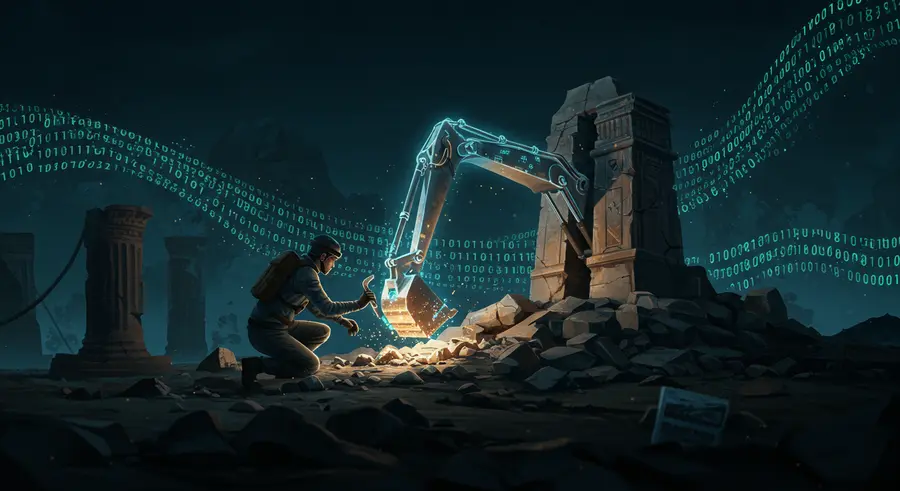Appearance
Unlocking Essential Digital Preservation Skills: A Journey to Safeguard Our Digital Heritage
The dust of ages clings to forgotten scrolls, their secrets locked away. But what if our algorithms could become the wind, gently revealing the whispers of history hidden within every pixel? In our rapidly digitizing world, the challenge isn't just creating digital information, but ensuring its longevity. This requires a specific set of digital preservation skills—a blend of technical acumen, strategic thinking, and a deep understanding of historical value.
The Imperative of Digital Archiving Proficiencies
Every day, vast amounts of data are created, from personal photos and scientific research to governmental records and cultural artifacts. Without active preservation, this digital deluge risks being lost to technological obsolescence, file corruption, or simply neglect. This potential "digital dark age" underscores the urgent need for individuals and institutions to cultivate robust digital preservation skills. It's about more than just backing up files; it's about active management, migration, and ensuring authenticity over time.
Navigating the Labyrinth: Key Digital Preservation Skills
What exactly constitutes these essential capabilities? The journey to becoming proficient in digital preservation involves mastering several interconnected areas:
1. Understanding Digital Objects & Formats
At the core of preservation is a deep understanding of digital objects themselves. This includes:
- File Format Identification & Analysis: The ability to recognize various file formats (e.g., JPEG, TIFF, PDF/A, WAV, MP4) and understand their vulnerabilities, dependencies, and suitability for long-term preservation. This involves recognizing the magic numbers or file signatures that identify a file type.
- Metadata Creation & Management: Knowing how to generate, embed, and manage descriptive, administrative, structural, and preservation metadata. This data about data is crucial for discoverability and long-term context.json
{ "identifier": "archaeological_site_001_scan_2025", "title": "LIDAR Scan of Ancient Megalithic Site - Sector B", "creator": "Elara Reed (Aether_Forge_88)", "dateCreated": "2025-06-20T10:30:00Z", "format": "LAS", "formatVersion": "1.4", "fileSize": "1.2 GB", "preservationNotes": "Original raw LIDAR data. MD5 checksum generated. Next migration scheduled 2030.", "rights": "CC BY-NC 4.0" } - Bitstream Preservation: Ensuring the integrity of the digital bits, often through checksums and fixity checks (e.g., MD5, SHA-256).
2. Strategic Planning & Risk Management
Digital preservation is a proactive discipline. This requires:
- Appraisal & Selection: Determining what digital content has enduring value and should be preserved.
- Preservation Planning: Developing strategies and policies for long-term access, including obsolescence management.
- Risk Assessment: Identifying potential threats to digital content, from media degradation to technological changes and human error.
3. Technological Fluency
While not everyone needs to be a coder, understanding underlying technologies is vital:
- Storage Solutions: Familiarity with various storage media (tape, hard drives, cloud) and strategies (e.g., 3-2-1 backup rule).
- Migration & Emulation: Knowing when and how to migrate data to newer formats or use emulation to access obsolete software/hardware environments.
- Tool Proficiency: Competence with digital preservation tools like FTK Imager, BitCurator, DROID, or command-line utilities for data integrity.
4. Legal, Ethical, & Policy Understanding
Digital preservation is not just technical; it's also about governance:
- Copyright & Licensing: Navigating intellectual property rights in a digital context.
- Data Privacy & Security: Protecting sensitive information while ensuring access.
- Policy Development: Creating institutional policies that support sustainable digital preservation.
Pathways to Mastering Digital Preservation Skills
The good news is that acquiring these digital preservation skills is more accessible than ever. Organizations like the Digital Preservation Coalition (DPC) are at the forefront, offering invaluable resources.
One of the most popular initiatives is the DPC's "Novice to Know-How" learning pathway. This free, expert-designed online training has opened doors for countless individuals and organizations. It provides practical, self-paced training that demystifies complex concepts and offers actionable steps for those embarking on their digital archiving journey. You can learn more about their resources here.
There are also numerous academic programs, workshops, and online courses dedicated to fostering digital preservation knowledge. The key is continuous learning, as the technological landscape is constantly evolving.
Visualizing the Preservation Journey
Let's imagine the journey of a digital artifact. Here's a conceptual diagram illustrating the flow:
mermaid
graph TD
A[Digital Object Creation] --> B{Appraisal & Selection};
B --> C[Ingest & Metadata Capture];
C --> D[Preservation Storage (Multiple Copies)];
D --> E{Monitoring & Fixity Checks};
E -- Detected Change/Obsolescence --> F[Migration or Emulation Strategy];
F --> G[New Preserved Digital Object];
G --> D;
D --> H[Access & Use];
H -- Feedback --> A;This journey requires constant vigilance and the application of diverse digital preservation skills at each stage.
Unearthing Insights, One Algorithm at a Time
Our digital past holds untold stories, but only if we possess the digital preservation skills to unlock them. From the meticulous detail of metadata creation to the strategic foresight of obsolescence planning, every byte tells a story, and every algorithm can unearth a truth. Let’s dig deeper into that dataset, ensuring that the whispers of history encoded in our digital archives resonate loudly for generations to come.
By investing in these digital preservation skills, we transform from passive observers of data decay into active custodians of our shared digital heritage. The future of our past depends on it.
::: center  :::
:::
References and Further Reading:
- Digital Preservation Coalition (DPC): https://www.dpconline.org/
- DPC's "Novice to Know-How" Pathway: https://about.jstor.org/blog/resources-and-free-training-with-the-digital-preservation-coalition/
- iPRES (International Conference on Digital Preservation): https://www.digipres.org/
- "Digital Preservation is People: Thinking About Digital Skills for Archivists" by Grant Hurley: https://www.granthurley.ca/blog/digital-preservation-is-people-thinking-about-digital-skills-for-archivists/